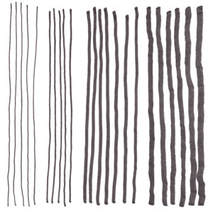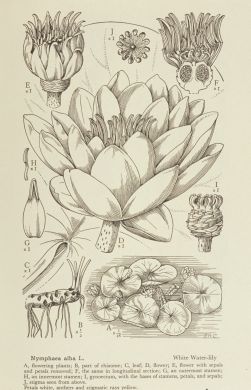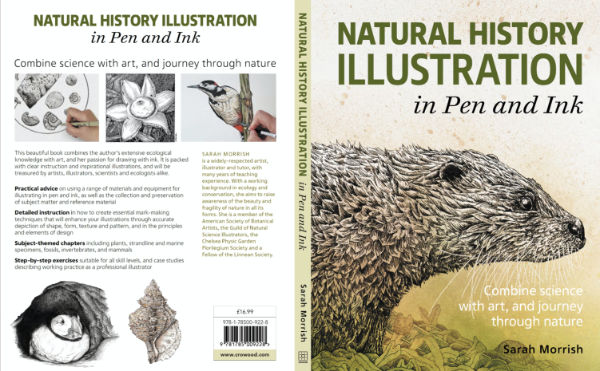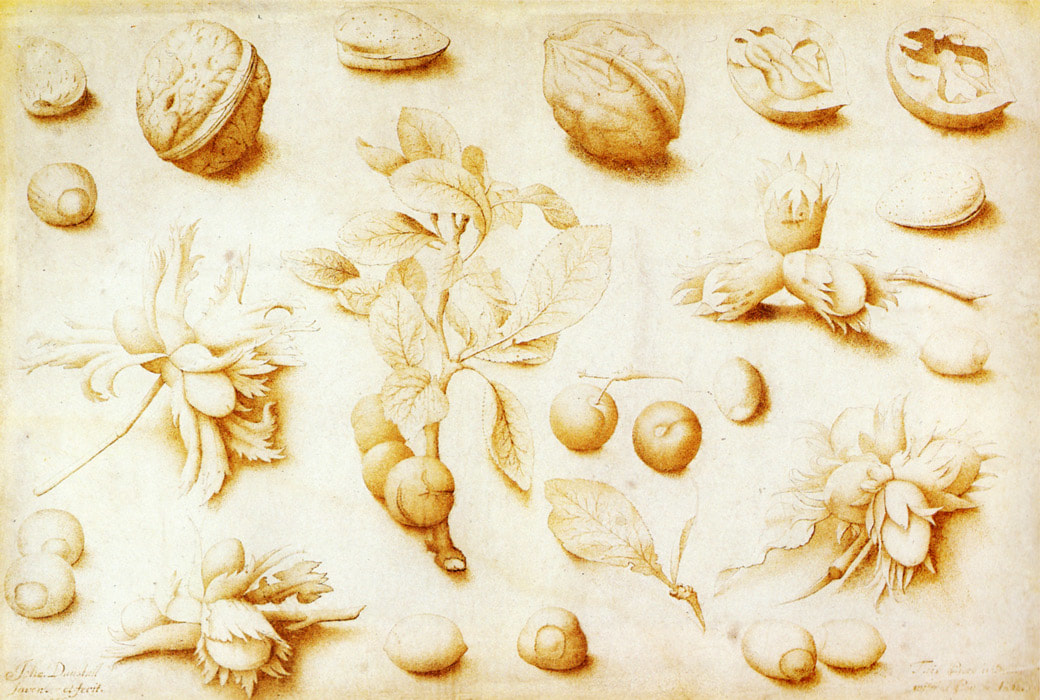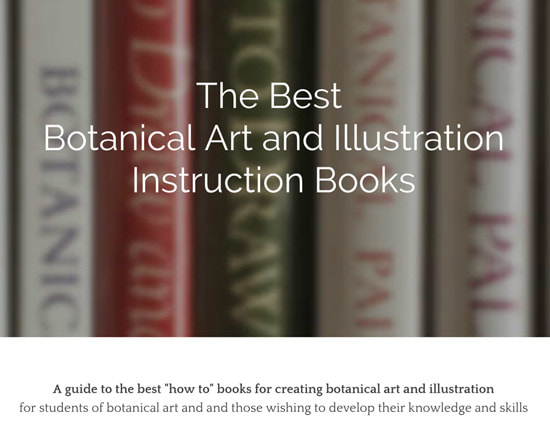- Home
- NEWS
-
HISTORY
- What is Botanical Art?
- What is Botanical Illustration?
- Botanical Art History Books >
- Herbals
- Florilegia and Flora
- Patrons of Botanical Art >
- Past Masters - Botanical Art and Illustration >
- Famous Asian Botanical Artists (600-1900)
- 20th & 21st Century Botanical Artists >
- Botanical Photographers
- Botanical and Herbal Art Online
-
ARTISTS
- Botanical Artists in the UK
- Botanical Artists in North America
- Botanical Artists in Europe
- Botanical Artists in Australia and New Zealand
- Botanical Artists in Asia
- Botanical Artists in Africa
- Botanical Artists in Latin America
- Botanical Printmakers, Photographers, Sculptors et al
- The Jill Smythies Award
- Botanical Artists on Facebook
- Botanical Art Blogs
-
Exhibitions
- Calls for Entries - OPEN exhibitions
- Online Exhibitions >
- RHS Botanical Art & Photography Shows >
- The Shirley Sherwood Gallery of Botanical Art >
- Hunt International Exhibition of Botanical Art & Illustration
-
UK
>
- North America >
- Europe >
- Australasia >
- Asia >
- Africa
- ARCHIVE: World Wide Exhibition of Botanical Art 2018
-
Education
- NEW BOOKS about Botanical Art and Illustration >
-
Best Botanical Art Instruction Books
>
- Tips and Techniques >
- Botanical Art Video Tips >
- Online Botanical Art Instruction >
- International Directory: Botanical Art Teachers
- International Directory of Botanical Art Courses >
- Artist Residencies, Scholarships and Bursaries
- Diplomas and Certificates >
- Distance Learning Courses
- Talks, Lectures & Tours
- Botanical Education on Facebook
- Materials
- Groups
-
Botany
- Why botany matters to artists
- Botany Books for artists >
- Scientific botanical illustration
- Plant Forms and Anatomy
- Plant Evolution and Taxonomy
- Plant Names and Botanical Latin
- Botanical Dictionaries
- How to Identify Plants
- Recording a Plant / Sketchbooks >
- Botanic Gardens & Herbaria >
- Blogs about Plants and Flowers
- Contact
Tips relevant to creating botanical drawings and illustrations in pen and ink,
choosing your pen and ink and maintaining your pen
choosing your pen and ink and maintaining your pen
This page covers the following topics:
|
Creating a botanical illustration in pen and ink
|
Technical Tools for Pen and Ink Illustration
|
The banner is part of a drawing of Studies of Walnuts and Hazelnuts done by John Dunstall in 1666.
The drawing is executed in Pen and brown ink over metalpoint outlines on vellum.
The drawing is executed in Pen and brown ink over metalpoint outlines on vellum.
CREATING A BOTANICAL ILLUSTRATION IN PEN AND INK
Why is pen and ink used for botanical illustration?
|
Scientific botanical illustrations are typically produced in pen and ink
|
CLICK BUTTON (above) to see the page (in the Botany section) which has much more detail on approaches to scientific botanical illustration - the bulk of which is done in liaison with botanical gardens and botanists. |
REFERENCE
- Biological Illustration: A Guide to Drawing for Reproduction by Claire Dalby and D. H. Dalby. This provides a detailed discussion of drawing in pen and ink and in particular the nature of line and tone that can be achieved using pen and ink.
- Scientific Illustration: Pen and Ink Techniques - Line & Stippling - April 20th - Lizzie Harper Before being able to work into tone in pen and ink, you need to be confident of your lines.
- Pen and Ink | Association of Medical Illustrators - Tim Phelps explains why he uses pen and ink for scientific illustrations. He details pens and supports he uses today.
- Botanical Illustrator Alice Tangerini - discusses some of her approaches to producing botanical illustrations for the Smithsonian.
Pen and ink techniques
The techniques used for drawing with pen and ink for reproduction in part depends on the technological process that will be used for printing.
|
Techniques employed by pen and ink artists include:
|
Pencil if often used first to get the drawing right, with the pen and ink being used to strengthen the line and make it clearer when it is reproduced or displayed
Gradation is achieved due to the spacing of lines or dots - and in some cases the extent to which ink is diluted to produce a grey rather than a black ink In a pen and ink drawing, hatching or stippling should be used to show tone and form - and are NOT ways to a fill a space. One of the most difficult things when doing a pen and ink drawing is understanding when to stop using your pen!
|
|
A great example of sustained and consistent pen and ink drawing is Stella Ross Craig's Drawings of British Plants. She used a mixture of line and stipple to describe a plant.
|
The size of a pen and ink drawing
Ink drawings are often reduced for publication, however this can mean that finer detail becomes lost.
Consequently you NEED TO KNOW
Consequently you NEED TO KNOW
- whether or not a drawing is for reproduction before you start and
- to what extent the image might be resized. (This also has implications for how you represent scale).
The surface of a pen and ink drawing
A very consistent hard surface - without give - is preferable.
Most prefer to draw on a smooth surface which allows the pen nib or point to move smoothly.
Surfaces favoured by professional botanical illustrators include
Consideration also needs to be given to the extent to which the support will allow erasure (although now most drawings are converted to digital images for reproduction this is of less consequence).
- Lines need to be clean and not furry!
- a surface that does not allow the ink to bleed or absorb into the fibres within the paper.
- Surfaces with a tooth will create a drag on the pen nib.
Most prefer to draw on a smooth surface which allows the pen nib or point to move smoothly.
Surfaces favoured by professional botanical illustrators include
- Illustration board,
- Bristol Board (paper) and
- drafting film (vellum).
- Heavier weight Bristol Board (eg 4 sheet or 5 sheet) is preferable for larger drawings as the heavier weight paper helps to prevent creasing.
Consideration also needs to be given to the extent to which the support will allow erasure (although now most drawings are converted to digital images for reproduction this is of less consequence).
Natural History Illustration in Pen and Ink
by Sarah Morrish
by Sarah Morrish
HIGHLY RECOMMENDED
This books focuses on Natural History Illustration rather than botanical illustration. However
This books focuses on Natural History Illustration rather than botanical illustration. However
- all the practical advice about materials and equipment and and detailed instruction information about mark-making techniques and how to develop illustrations in pen and ink are also applicable to botanical subject matter.
- Plus the book includes a 26 page chapter on botanical subjects
- it's particularly suitable for those who prefer to develop monochrome illustrations but also tackles how pen and ink can be used with other media.
|
This book has its own Facebook Page: https://www.facebook.com/NaturalHistoryIllustrationPenandInk
|
Publisher : The Crowood Press Ltd (10 Aug. 2021)
Language : English Paperback : 208 pages ISBN-10 : 1785009222 ISBN-13 : 978-1785009228 Dimensions : 22 x 1.5 x 28 cm Also available on Kindle Ranked #12 in Pen and Ink Drawing within 4 weeks of publication in August 2021 - and is the ONLY book about technical illustration in pen and ink in the top 12. It's selling very fast and has already gone for reprint. RATED 5 out of 5 stars by 7 global ratings on Amazon UK BUY THIS BOOK Natural History Illustration in Pen and Ink from Amazon.com
|
ABOUT THE AUTHOR
Sarah Morrish is a widely-respected artist, illustrator and tutor, with many years of teaching experience. With a working background in ecology and conservation, she aims to raise awareness of the beauty and fragility of nature in all its forms. She is a member of the American Society of Botanical Artists, the Guild of Natural Science Illustrators, the Chelsea Physic Garden Florilegium Society and a Fellow of the Linnean Society.
Sarah Morrish is a widely-respected artist, illustrator and tutor, with many years of teaching experience. With a working background in ecology and conservation, she aims to raise awareness of the beauty and fragility of nature in all its forms. She is a member of the American Society of Botanical Artists, the Guild of Natural Science Illustrators, the Chelsea Physic Garden Florilegium Society and a Fellow of the Linnean Society.
TECHNICAL TOOLS FOR PEN AND INK ILLUSTRATION
What type of pen is used for botanical illustration?
Those who favour pen and ink tend to be devoted to either dip pen or technical drawing pens.
The latter give a totally consistent line but can be a bit more boring when compared to the lines that can be achieved with the benefit of a pointed and flexible nib.
The latter give a totally consistent line but can be a bit more boring when compared to the lines that can be achieved with the benefit of a pointed and flexible nib.
Technical Drawing Pens
|
Most professional botanical illustrators using pen and ink will will use a technical drawing pen - such as a Rapidograph or Isograph.
This has a tubular nib and the line they produce comes in a range of predetermined widths which conform to ISO standards. Essentially they produce a very consistent and stable line with little variation in width. The pens also use typically use permanent black ink. Botanical artists will sometimes vary the dilution of the ink to get gradations of tone without needing to change the line width. |
REFERENCE
|
|
DRAWING USING A RAPIDOGRAPH
This is a stop-motion video of a botanist (Alastair Robinson) drawing a new orchid species using a Rotring Rapidograph. Alastair was highly commended in the Margaret Flockton Award 2018 WARNING: MUSIC will play loudly! (I can't suppress it but you can!) |
|
|
Rotring 699530 Rapidograph College Set with Pen Station
The set includes:
BUY THIS PEN: |
Rotring 699530 Rapidograph College Set with Pen Station from Amazon UK
from Amazon UK
|
Røtring Pen © Tips from Esmee Winkel
Esmée Winkel GM is a professional scientific illustrator who draws in pen and ink. After the RHS Botanical Art Show in 2016, where we discussed use of pen and ink she very kindly sent me some notes about how she uses a Røtring Pen for sharing with botanical art students. See Notes on using the Røtring Pen © botanical illustrator Esmée Winkel GM (March 2016) document which you can download (see Scribd) |
Your browser does not support viewing this document. Click here to download the document.
|
How to clean your Rapidograph Technical Pen
|
Many botanical illustrators use a technical pen - such as a Rapidograph for their monochrome botanical illustration in pen and ink. However technical pens can get clogged and fail to perform well - and that might be because they need to be cleaned.
There's a Rapidograph cleaning kit and this is how to use it. |
|
Pigment Liners and Disposable Permanent Ink Pens
Pigment liners are typically used as the ink used in them can be both waterproof and lightfast - and there's no need to mess about with bottles of ink or changing ink cartridges. They also come in a variety of weight of lines.
The advantage of a lightfast ink is that the pen and ink can also be used in combination with colour - using either watercolour or coloured ink washes
The advantage of a lightfast ink is that the pen and ink can also be used in combination with colour - using either watercolour or coloured ink washes
|
Characteristics of a disposable permanent ink pen which make it useful for illustration are as follows:
|
The disadvantage of a disposable permanent ink pen is that, unlike technical drawing pens, you have to go with the colour of ink chosen by the manufacturer and you cannot vary the saturation level in any way.
|
There are various brands of disposable permanent ink pens. Some of the ones I would recommend and I know are used by professional illustrators are show below.
|
Staedtler Pigment Liner
The Pigment Liner uses indelible pigment ink which is discharged though a metal nib (which means that this does not deteriorate before the ink runs out). There are a range of widths from 0.05mm fine line up to a 2mm chisel tip. The best ones for botanical illustration are the fine lines less than 0.5mm. Below is a set of 0.05 mm pigment liners by Staedtler - which deliver an incredibly fine line - and which I buy on a periodic basis. You can leave the cap off for a long time without the pen drying out - you just need to remember not to skip a day and leave the top off for more than 18 hours while they are not in use! BUY THIS PEN
|
Pigma Micron Pen
The Pigma ink is permanent, acid-free and waterproof and you can get it in black or sepia. Obviously black is desirable for reproduction- but it's nice to have sepia for original art for sale. The nib produces a fine line. The width sizes are all numbered and the numbers do not correspond to mm widths - which is slightly confusing! Below is a pack of different widths - Sizes 005, 01, 02, 03, 04, 05 = 0.20, 0.25, 0.30, 0.35, 0.40, 0.50mm line widths BUY THIS PEN
Pigma Micron 6 Fineliners
|
Dip Pens
|
Botanical artists who use pens but don't adopt the precise approach of the professional botanical illustrator (eg Francesca Anderson) will often use a dip pen.
Some would say that dips pens are for purists and fine artists (eg botanical art) and technical pens are for those involved in technical or scientific drawing (eg botanical illustration). However it's not actually as simple as that. It really depends on how skilled you are using them and the techniques you use . The main advantage of using a dip pen is that it allows the artist to vary the weight of the line - which is impossible if you use a technical drawing pen which is manufactured to deliver a consistent line of a precise width. The type of nib used is down to the preference of the individual artist. A crow quill nib (Gillott number 290) is favoured by some because it can produce very fine hair lines. (see below) Dip pens can also be used with coloured inks. |
REFERENCE
|
Pen and Ink techniques for botanical illustration with a dip pen
HOW TO USE A DIP PEN
- The first video explains about the dip pen and why artists like to use them.
- The second video explains how to draw a botanical subject using a dip pen.
|
|
|
|
Mindy Lighthipe provides advice on supplies and techniques for pen and ink. It covers:
|
|
|
Speedball 9402-102 Crow Quill Pen, Pack of 12, Silver
Speedball 9402-102 Crow Quill Pen, Pack of 12, Silver
|
Hunt Crowquill Pen Point Holder 9452
The following Quill nibs will fit this pen holder
Hunt Crowquill Pen Point Holder 9452
|
Resources about Botanical Art and For Botanical Artists
ABOUT: About the Author | Contact | Testimonials | Privacy Policy COPYRIGHT 2015-22: Katherine Tyrrell all rights reserved.
|
NEWS
News Blog about artists, awards, exhibitions etc. |
EXHIBITIONS
- Calls for Entries - Exhibitions around the world - Online Exhibitions - RHS Exhibitions - Hunt Exhibitions ORGANISATIONS
- Botanical Art Societies - national / regional / local - Florilegium & Groups - Botanical Art Groups on Facebook |
EDUCATION
- Tips and Techniques - Best Botanical Art Instruction Books - Directory of Teachers - Directory of Courses - Online Botanical Art Courses - Diplomas and Certificates - Talks, Lectures and Tours ART MATERIALS (Paper / Vellum) BOTANY FOR ARTISTS - Scientific Botanical Illustration - Best Botany Books for Artists - Plant Names & Botanical Latin BOTANIC GARDENS & Herbaria |
FEEDBACK
Please send me . - news to share - info. about exhibitions - any suggestions for what you'd like to see on this website ADVERTISE Contact me if you'd like to promote workshops and courses on this site. AFFILIATION This website is free to you but not for me! (See Affiliate Income below) |
|
Cookies, Personal Data & Privacy tells you how this site relates to and impacts on you and your privacy - and your choices.
Product & company names may be trademarks of their respective owners |
About Affiliate Income: This website has been created to share information not to make a profit. I am an Amazon Associate and earn from qualifying purchases (e.g. books from Amazon) which helps offset costs associated with maintaining this very large website.
|
- Home
- NEWS
-
HISTORY
- What is Botanical Art?
- What is Botanical Illustration?
- Botanical Art History Books >
- Herbals
- Florilegia and Flora
- Patrons of Botanical Art >
- Past Masters - Botanical Art and Illustration >
- Famous Asian Botanical Artists (600-1900)
- 20th & 21st Century Botanical Artists >
- Botanical Photographers
- Botanical and Herbal Art Online
-
ARTISTS
- Botanical Artists in the UK
- Botanical Artists in North America
- Botanical Artists in Europe
- Botanical Artists in Australia and New Zealand
- Botanical Artists in Asia
- Botanical Artists in Africa
- Botanical Artists in Latin America
- Botanical Printmakers, Photographers, Sculptors et al
- The Jill Smythies Award
- Botanical Artists on Facebook
- Botanical Art Blogs
-
Exhibitions
- Calls for Entries - OPEN exhibitions
- Online Exhibitions >
- RHS Botanical Art & Photography Shows >
- The Shirley Sherwood Gallery of Botanical Art >
- Hunt International Exhibition of Botanical Art & Illustration
-
UK
>
- North America >
- Europe >
- Australasia >
- Asia >
- Africa
- ARCHIVE: World Wide Exhibition of Botanical Art 2018
-
Education
- NEW BOOKS about Botanical Art and Illustration >
-
Best Botanical Art Instruction Books
>
- Tips and Techniques >
- Botanical Art Video Tips >
- Online Botanical Art Instruction >
- International Directory: Botanical Art Teachers
- International Directory of Botanical Art Courses >
- Artist Residencies, Scholarships and Bursaries
- Diplomas and Certificates >
- Distance Learning Courses
- Talks, Lectures & Tours
- Botanical Education on Facebook
- Materials
- Groups
-
Botany
- Why botany matters to artists
- Botany Books for artists >
- Scientific botanical illustration
- Plant Forms and Anatomy
- Plant Evolution and Taxonomy
- Plant Names and Botanical Latin
- Botanical Dictionaries
- How to Identify Plants
- Recording a Plant / Sketchbooks >
- Botanic Gardens & Herbaria >
- Blogs about Plants and Flowers
- Contact
